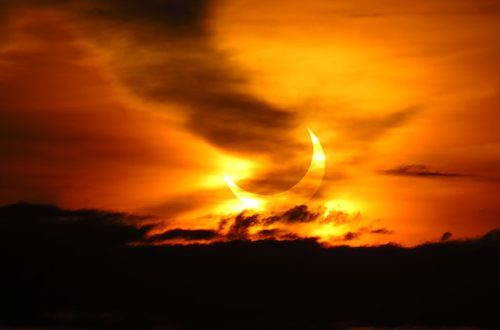Preparing For Launch: An Update on JWST

Move over, Hubble! The James Webb Space Telescope (JWST) is the successor to NASA’s current and aging Hubble Space Telescope. It is the size of a tennis court, and it will orbit the sun at 940,000 miles away from Earth. As I’m writing this post, the JWST is being assembled at NASA’s Goddard Space Flight Center in Greenbelt, Maryland, with a 2018 launch date approaching quicker day by day.
Purpose
The Webb will be the world’s leading observatory for the next ten years, serving a partnership of 20 countries, from Austria to Ireland to the United States.
The JWST has four main goals that cover every critical moment in our Universe’s history:
- Search for light from the Big Bang. The JWST will be able to trace the first evidence of stars and galaxies that formed after the Big Bang.
- Study how galaxies form and evolve.
- Understand how stars and planetary systems form.
- Study the origin and potential for life in planetary systems like Earth.
Capabilities
The following statement is no lie: the Webb will look into the past. Through infrared light technology, it will peer inside the origins of our Universe, hunting for the formation of the first galaxies after the Big Bang that have still gone unobserved.
Wondering how Webb can seemingly transcend space and time? Imagine you’re looking up at the sky. Think about the smallest, faintest stars you can see with your eye. These stars are younger stars. Objects that are farther away appear younger because their light takes longer to reach Earth.
The universe is also expanding, which means many sources of light, like stars, are redshifting. A redshift occurs whenever a source of light moves away from the point of observation. These light sources are easier to see when viewed in the near-infrared part of the light spectrum rather than the visible because of the change in wavelength. Infrared’s longer wavelengths will allow the Webb to make its “time-traveling” observations.
The Webb will be traveling through frigid regions of space, but it will use the extreme cold (-233.3 Celsius, -388 degrees Fahrenheit) to its advantage. The telescope has an open design, unlike the Hubble, which is shaped like a tube (to keep out stray light). Webb’s infrared sensors must be protected from heat, so the open design allows heat to escape into space. To build a machine that can withstand cold temperatures, parts must be cold formed. If your project requires precious alloys, such as gold or nickel, this may be the only option.
Its sunshield is made of heat-resistant Kapton. Five layers of the material deflect heat or light that makes it through the other layers.
Instruments and Innovations
The Webb will carry an array of high-tech features that will allow it to scan the origins of the Universe. For the infrared system, it will carry the following:
- Near Infrared Camera (NIRCam)
- Mid Infrared Instrument (MIRI)
- Near Infrared Spectrograph (NIRSpec)
- Fine Guidance Sensors/ Near Infrared Imager and Slitless Spectrograph (FGS/NIRISS)
The Webb will also feature many unique innovations, such as the following:
- Deployable Sunshield
- Improved Detectors
- Folding Segmented Mirror
- Cryogenic Actuators and Mirror Control
- Micro-shutters
Webb’s most innovative component, however, is its mirror. It folds up inside the Ariane 5 rocket that will launch the telescope and unfolds when the telescope is reaching its orbit.
The mirror is made up of 18 lightweight beryllium panels and rigid segments. The segments are made of beryllium and coated with 24-karat gold. This isn’t for show, though — it’s used to make the mirror 98 percent reflective, as opposed to ordinary mirrors that are 85 percent reflective.
Launch Schedule
The telescope will be launched on an Ariane 5 rocket from French Guiana in October of 2018.
Would you like to receive similar articles by email?






One Comment
Micah Suarez
Makes me wonder, why don’t they study the sun further? For us to make the most out of it?